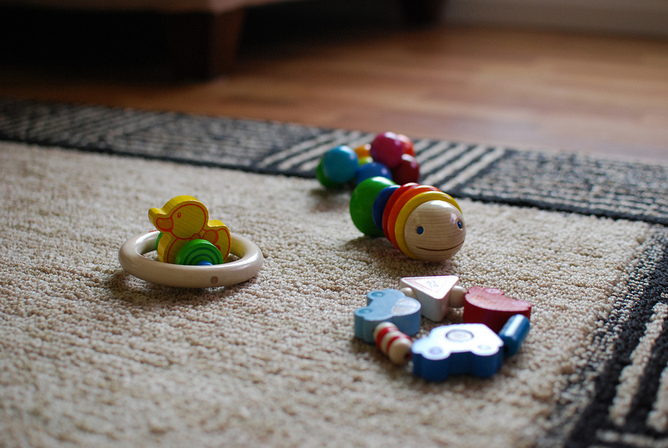
Why Can’t a Man Think Like a Woman, and a Woman Think Like a Man? (Op-Ed)
This article was originally published at The Conversation. The publication contributed the article to Live Science's Expert Voices: Op-Ed & Insights.
Men and women may feel like they differ on much more than just the possession or not of a Y chromosome. How we react emotionally to a situation, remember events and navigate our way around the environment has also been shown to differ between genders.
Gender differences in some of our physical features can be easily determined, aside from just the obvious differences in terms of genitals. A skeleton can be identified as male or female based on the shape of the pelvis, skull and sternum.
Whether our brains differ structurally is a hot topic in neuroscience. Recently, a neuroimaging study suggested that female brains are functionally more suited to social skills including language, memory and multi-tasking, while men are hard-wired to be better at perception and co-ordinated movement.
But are these abilities innate to our gender, or are they influenced by the environment? Are these studies subject to gender biases themselves?
Boy brain, girl brain?
During fetal development, male and female embryos start off the same. This is why we all have nipples! But the presence of different hormones such as estrogen and testosterone during gestation causes physical differences to start to arise – for example guiding the formation of ovaries or testes. Exposure to different cocktails of hormones as a fetus may change how the brain develops.
A group of Cambridge scientists led by Simon Baron-Cohen suggested that men are, on average, better at analytical tasks, whereas women are better at empathising and emotional processing. These traits were linked with testosterone levels during development.
Sign up for the Live Science daily newsletter now
Get the world’s most fascinating discoveries delivered straight to your inbox.
Baron-Cohen analyzed fetal testosterone levels from amniotic fluid samples of their mothers. In later life they measured the children’s empathising or systemising abilities. He found lower levels of testosterone were correlated with greater empathy during childhood development. This supports the idea that women (low testosterone) are better at empathising and detecting emotion than men.
Size matters…
Male brains are, on average, 10% larger than females (accounting for body size). But some scientists say that a large brain is not simply a smaller brain scaled up. A larger brain means more distance, which can slow the transmission of information down. So differences in structural connections and arrangement may reflect wiring adaptations of larger brains.
A group of researchers found regional size differences of male and female brains, which may balance out the overall size difference. In females, parts of the frontal lobe, responsible for problem-solving and decision-making, and the limbic cortex, responsible for controlling emotions, were larger. In men, the parietal cortex, which is involved in space perception, and the amygdala, which regulates emotion and motivation, particularly those related to survival, were larger.
But experiences change our brain. So are these differences due to the brain adapting to demands – in the way a muscle increases in size with extra use?
Nature or nurture? Or gender stereotyping?
Some scientists disagree completely that male and female brains differ structurally. Neuroscientist Prof Gina Rippon, of Aston University, Birmingham says that differences in male and female brains are caused entirely by environmental factors and are not hard-wired at birth.

The gender specific toys children play with - for example dolls for girls and cars for boys – could be changing how their brains develop.
Many toys aimed at boys involve physical skills and logic, whereas many girl-aimed toys involve nurturing behaviours and socialising. These kinds of gender-specific toys and encouraging only gender-specific play could limit potential in both sexes. This has recently lead to companies developing more gender neutral toys that can aid the development of balanced skills in children.
Why won’t men ask for directions?
Men generally perform better at activities that require spatial skills, like navigation. It is proposed men and women process spatial information differently. Women are more likely to rely on landmarks – “go left at the post office”, which is proposed to require the frontal cortex to maintain the information. Men are proposed to use the hippocampus to a greater degree. So men are more likely to use spatial and landmark information – “go east then past the post office”.
But it’s suggested that women use their language skills to an advantage in certain situations. So a woman may be more likely to ask for directions than a man.
In laboratory studies it has been shown that male and female rats use different strategies to navigate their way around a maze. Female rats mostly used landmarks, whereas males used global spatial information. Interestingly, both strategies were equally effective.

Neurosexism?
Whether the observed functional differences in male and female brains are innate or a consequence of experience remains difficult to determine. The social phenomenon of gender significantly impacts on the experiences individuals encounter through development and on a daily basis.
It is important in scientific research to avoid neurosexism - jumping to gender stereotypes as conclusions to explain observations. This can lead to misunderstanding and over-selling of discoveries and observations in neuroscience.
But no studies currently exist that have looked at gender differences in brain structure in a human population that hasn’t been gender socialized.
Amy Reichelt does not work for, consult to, own shares in or receive funding from any company or organisation that would benefit from this article, and has no relevant affiliations.
This article was originally published on The Conversation. Read the original article. The views expressed are those of the author and do not necessarily reflect the views of the publisher. This version of the article was originally published on Live Science.









